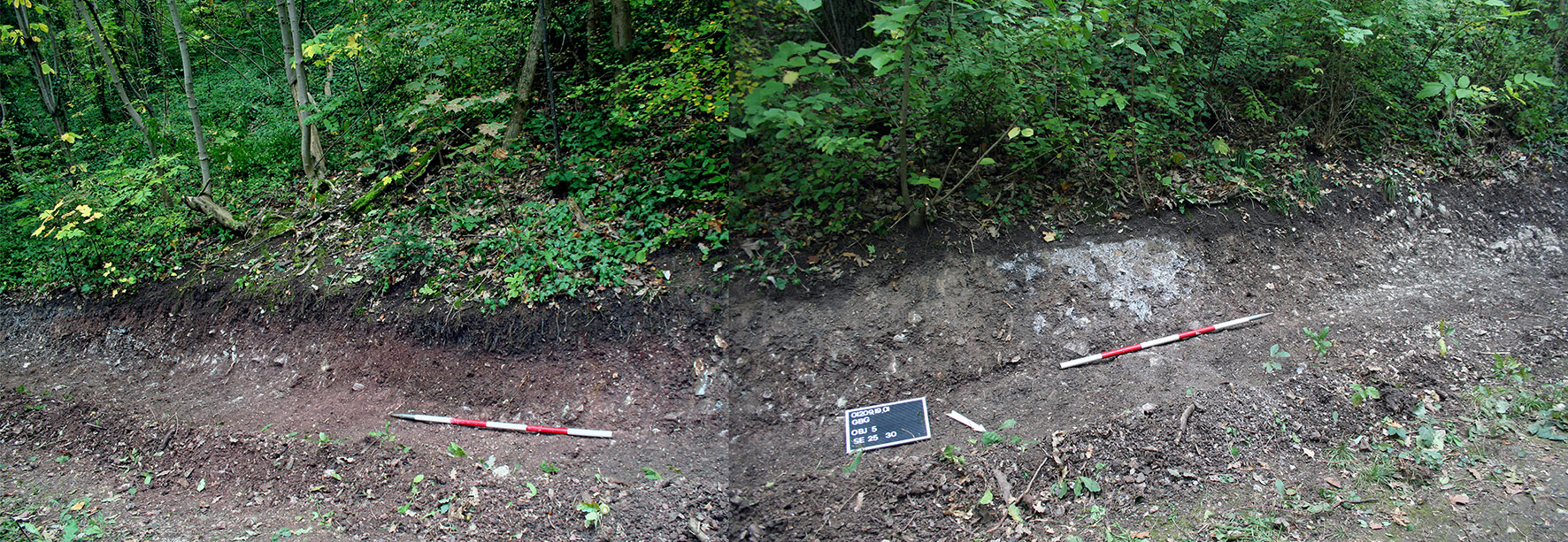GemeindeBergBau: Extensive radiolarite mining at the Vienna Gemeindeberg during the Neolithic
The Gemeindeberg is the longest known prehistoric (hilltop) settlement in Vienna. First excavations took place already in the 19th century. Although the use of the local radiolarite was implied, the actual mining site could never be verified. Newest research has now revealed extensive mining activities during the Stone Ages.
The Gemeindeberg is the longest known prehistoric (hilltop) settlement in Vienna. First excavations took place already in the 19th century. Although the use of the local radiolarite was implied, the actual mining site could never be verified. Newest research has now revealed extensive mining activities during the Stone Ages.
Two chronologically separated Copper Age settlement phases were detected at the hilltop of the Gemeindeberg: The older dates to the mid-4th millennium BC, the younger to the first half of the 3rd millennium BC. Both were repeatedly subject to archaeological investigations. During field surveys in the framework of the project ›BergbauLandschaftWien‹ aiming at the documentation of the radiolarite bearing zone, extensive prehistoric waste heaps containing debris from chipped stone production were detected immediately connected to the settlement area. They extend over the entire northern flank of the hill below the settled hilltop.
Excavation and profile documentation 2018–2019
In 2017, the profile of a fresh road-cut revealed some archaeological pit-like features. The profile with those features was documented, followed by a small scaled excavation in this area. As a result, it was possible to identify unambiguous traces of prehistoric mining, partly open cast quarries employing fire setting, and additionally pits or vertical shafts of yet unknown depth. Despite minimally invasive fieldwork covering a very small area we identified at least five mining features so far. Other findings indicate extensive waste debris filling up large open cast quarries.
Analyses of radiolarite artefacts
In 2020, the planned fieldwork was cancelled due to Covid. Instead, one part of the lithic assemblage from 2018 (artefacts from quarrying pit 2) was analysed according to a method specifically developed to determine the transformation degree of a stone tool. For this task, a specialised recording system combining a mass technological assessment of all lithics followed by a detailed individualised analysis of selected specimens was applied. As expected, the result clearly showed that the transformation process was only minimally advanced, which is in accordance with an interpretation of this assemblage representing mining debris and waste from the initial stages of knapping.
Middle Neolithic – and then?
As indicated by 14C dates, the so-far detected mining traces date back to the Middle Neolithic (5th millennium BC) and are therefore significantly older than the settlements. This may appear as a surprise, however this finding fits well into the picture in east Austria (e.g. Antonshöhe and Flohberg in Vienna) and eastern Central Europea (e.g. Bakony-Gebirge/HU, Krumlovsky Les/CZ), where chert and radiolarite mining was especially extensive in the Lengyel Culture. The use of the source can also be assumed during the Copper Age as suggested by the assemblage recovered during the old excavations in the settlement area (e.g. an antler pick). It is also possible that the Copper Age lithic industries predominantly relied on the older waste heaps and extensive accumulations of knapping debris, since they did not demand such high quality standards as the Middle Neolithic blade industries.
Future prospecs
Depending on funding, it is planned to excavate one of the detected quarrying pits entirely to clarify if these are ›real‹ vertical shafts or only deep pits and to gather detailed information about the mining techniques. Additionally, we plan to collect more organic sample material for absolute dating, and to continue analyses of the lithic assemblage.


